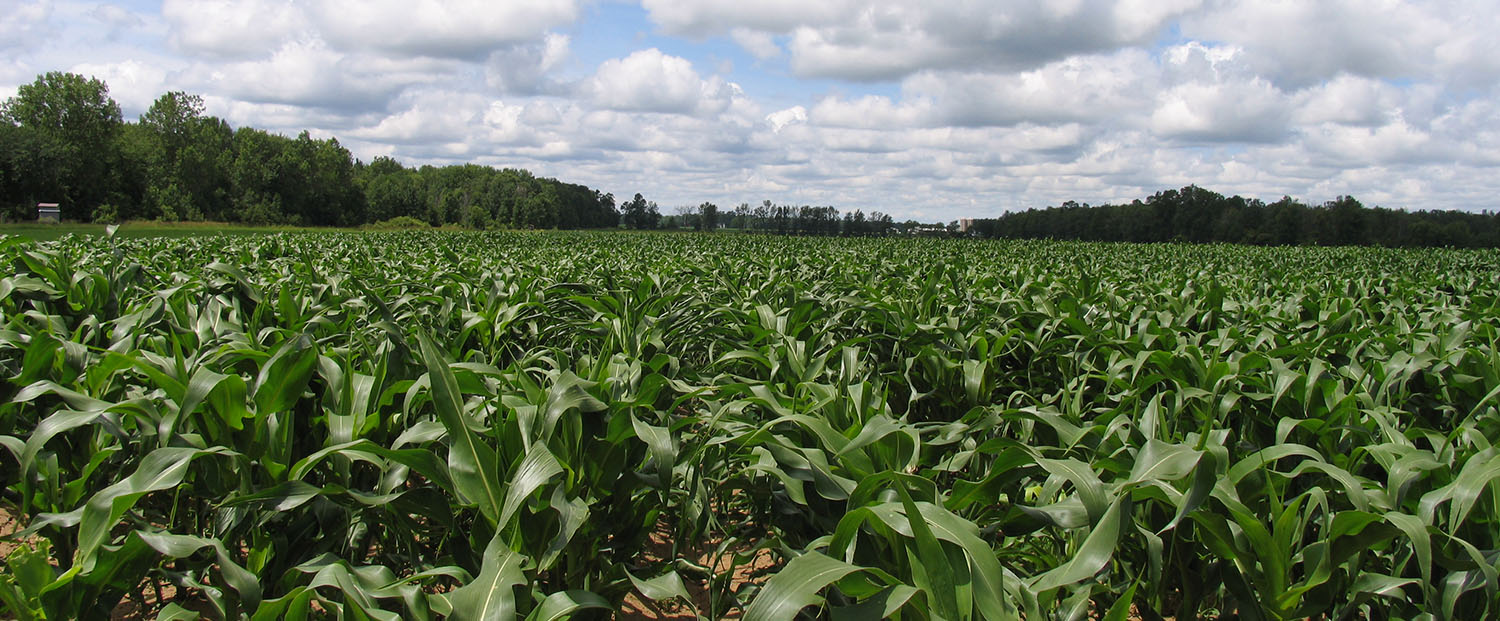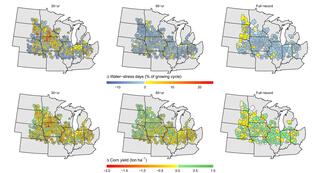
As the climate warms, many scientists and farmers have worried about how rising temperatures will affect agricultural systems and crop yields. Warmer air may increase evaporation and water loss from plants. This has led to concerns that crops will require more water—either from precipitation or irrigation—in a warmer future.
Why was this study done?
- Planning for a future in which bioenergy crops are used to meet some of society’s demand for fuels and chemicals requires a good understanding of how crop growth and needs, including water, will change as the climate changes.
- Since warmer temperatures generally lead to more evaporation, forecasted climate changes in major crop-growing regions such as the U.S. Midwest have raised concerns that it will get harder to maintain needed yields without large increases in precipitation or irrigation.
- Most crops grown in the Midwest rely on solely rainfall. If rainfall does not increase as the climate warms, crop yield would drop due to higher water demand by plants. Meeting this increased water need would require a significant expansion of irrigation infrastructure, at great cost to farmers.

What did the researchers do and find?
- Basso and colleagues looked at long-term historical summer temperature changes in the Midwest based on observations recorded at 1,356 weather stations, some dating back as far as 1894.
- They found that average warming in the region has been driven by increases in minimum temperature, while maximum temperature has slightly decreased. These trends resulted in a slight reduction in water demand by crops because of higher air humidity.
- The team used a crop simulation model to predict the changes in corn yield in 2050 using the temperature and precipitation trends of the past 125 years. The results show little change in either crop water demands or yields in the next 30 years, despite the warming climate.
What do these findings mean?
- Under the temperature trends projected through 2050, future yields of corn and other bioenergy crops in the Midwest may stay stable without need for expanded irrigation.
- The findings should allay concerns about crop water needs in the Midwest due to climate change based on current models. However, the authors note that annual variability in temperatures and precipitation may lead to years with unusually high or low water demand or crop yields.
Corresponding author
Contrasting long-term temperature trends reveal minor changes in projected potential evapotranspiration in the US Midwest
Authors: Bruno Basso, Rafael Martinez-Feria, Lydia Rill and Joe T. Ritchie
Published: March 5, 2021, Nature Communications
DOI: 10.1038/s41467-021-21763-7
Abstract:
Warming generally leads to increased evaporative demand, altering the amount of water needed for growing crops. For the Midwest, some studies have suggested that reaching yield targets by 2050 will not be possible without additional precipitation or large expansion of irrigation. Here, we show that this claim is not supported by the historical summer climate trends, which indicate that the warming of daily average temperatures is largely driven by increases in minimum temperatures, while maximum temperatures have decreased. This has translated into a net decrease in vapor pressure deficit (VPD) and potential evapotranspiration (PET). With the increasing rainfall, this suggests that crop water deficits have likely become less frequent in the region despite the warming climate. By projecting these trends into 2050 and ancillary use of a crop model, we estimate minor changes in PET that would have minimal effects on corn yields (<6%) under persistence of these trends.